★★★
“Skirts vs. ‘skins”
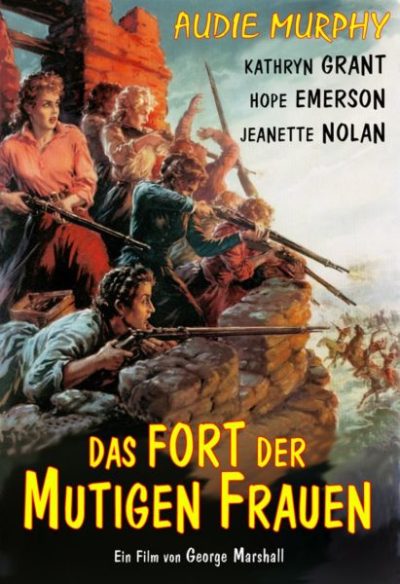 This is one where you need to take the era into account. Made in 1957, this was based on a short story from a couple of years earlier: “Petticoat Brigade” by Chester William Harrison. It’s very much an Audie Murphy movie – and understandably so, since the man was a bona fide hero, being one of the most-decorated American combat soldiers in World War II, before he became an actor. But the fifties was not a decade known for strong, independent female characters in Hollywood Westerns. We’ve covered a few: Woman They Almost Lynched and Johnny Guitar are likely the best. However, this works mostly because of the matter-of-fact way in which it depicts them, in contrast to the other example where they’re portrayed as unusual.
This is one where you need to take the era into account. Made in 1957, this was based on a short story from a couple of years earlier: “Petticoat Brigade” by Chester William Harrison. It’s very much an Audie Murphy movie – and understandably so, since the man was a bona fide hero, being one of the most-decorated American combat soldiers in World War II, before he became an actor. But the fifties was not a decade known for strong, independent female characters in Hollywood Westerns. We’ve covered a few: Woman They Almost Lynched and Johnny Guitar are likely the best. However, this works mostly because of the matter-of-fact way in which it depicts them, in contrast to the other example where they’re portrayed as unusual.
It takes place in 1864, when Lt. Frank Hewitt (Murphy) is part of the Union forces in the American Civil War. However, hearing of Indians going on the warpath towards his native Texas, he heads back to his home there, to warn the locals. They’re not too happy to see him – his town being on the Confederate side of the conflict – but they are eventually convinced of the problem. With no safe sanctuary to hand, they seek refuge in the local mission, which offers the only defensible sanctuary. A bigger issue then arises: almost all the adult men are away, fighting in the war. So it’s up to Hewitt, to wrangle the plucky but largely untrained women who remain, into a force capable of repelling the marauding natives.
While it’s a fairly boilerplate story, it’s delivered with a fair amount of nuance. The Union/Confederate situation is handled with moderation, and it’s even made clear that the Native Americans are a spectrum, from peaceful to warlike. The women, similarly, are a good range of characters, most of whom are willing to fight – and in some cases, die – in defense of their town. They range from a religious pacifist, to my personal favourite, Hannah Lacey (Emerson), whom Hewitt appoints as his second-in-command. She proclaims herself as good as “any three men” on a number of occasions, and appears to have the strength and skills to back up that claim. The likes of Hannah make up for odd missteps, like Hewitt turning one of the woman over his knee to spank her!
Naturally, there’s a slice of romance, with Hewitt meeting, once again, Anne Martin (Grant). She’s the sweetheart whom he left to join the army, only for her to marry another man, not long after his departure. They do the inevitable bickering before falling back in love. However this, and a rather contrived finale where the hero is miraculously saved from being hung for desertion, aren’t enough to derail what’s a solid and enjoyable Western adventure, one made before I was born. It manages to uplift its female characters rather than patronize them, yet never lets the message of empowerment get in the way of being entertaining.
Dir: George Marshall
Star: Audie Murphy, Kathryn Grant, Hope Emerson, Jeanette Nolan





 This one does take a while to reach the necessary threshold: probably only truly qualifies for the final twenty minutes or so, though it does talk a good game until that point. Also, it’s a decent enough combination of Western and home-invasion genres to that point, to pass muster. Nothing special, mind you. It just knows its limitations and is careful enough to work within them. It takes place in the Old West. whee Beth (Bernadette) and her twin children, Brian and Irene (Betsy) now live with her new husband, Robert (Krause). The trio appear to have escaped an abusive relationship, and it’s not long after a railroad surveyor pays a visit, before Irene is cheerfully telling him, she’s going to go back and kill her father some day.
This one does take a while to reach the necessary threshold: probably only truly qualifies for the final twenty minutes or so, though it does talk a good game until that point. Also, it’s a decent enough combination of Western and home-invasion genres to that point, to pass muster. Nothing special, mind you. It just knows its limitations and is careful enough to work within them. It takes place in the Old West. whee Beth (Bernadette) and her twin children, Brian and Irene (Betsy) now live with her new husband, Robert (Krause). The trio appear to have escaped an abusive relationship, and it’s not long after a railroad surveyor pays a visit, before Irene is cheerfully telling him, she’s going to go back and kill her father some day.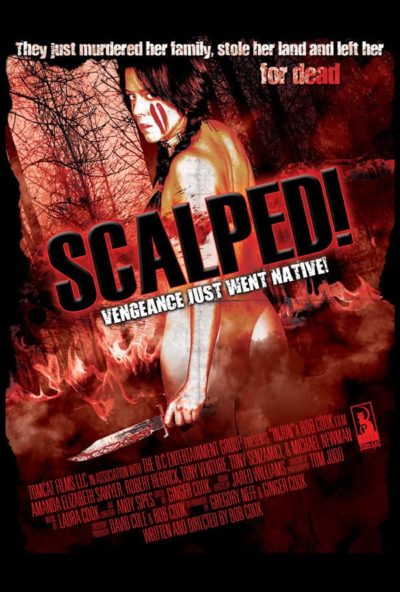 I never thought I’d find a film which would leave me yearning for the subtle and understated pleasures of the original I Spit on Your Grave, but here we are. 35 years on, and this cringeworthy copy was made, transplanting events to the old West. A further decade later: with a couple of re-titlings which jostle each other for inappropriateness, it’s out on a number of free movie streaming platforms. I’m here to tell you, not to bother. Even in the low-rent neighbourhood which is rape-revenge movies, you could close your eyes, pick a random entry, and be almost guaranteed to find something with a better script and general execution.
I never thought I’d find a film which would leave me yearning for the subtle and understated pleasures of the original I Spit on Your Grave, but here we are. 35 years on, and this cringeworthy copy was made, transplanting events to the old West. A further decade later: with a couple of re-titlings which jostle each other for inappropriateness, it’s out on a number of free movie streaming platforms. I’m here to tell you, not to bother. Even in the low-rent neighbourhood which is rape-revenge movies, you could close your eyes, pick a random entry, and be almost guaranteed to find something with a better script and general execution.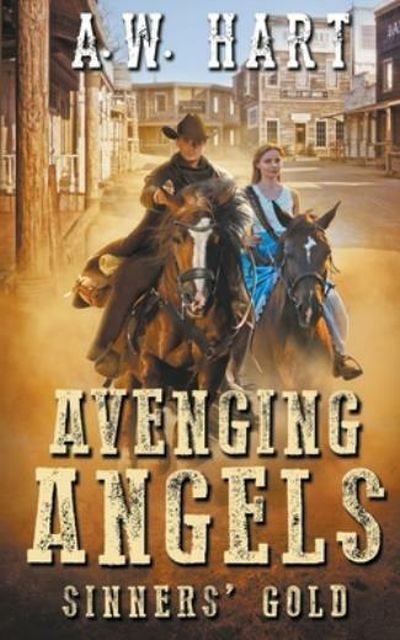 “A. W. Hart,” the nominal author of the Avenging Angels series, is actually a house pen name used by Wolfpack Publishing for the multiple authors of this and one or two of their other series. Where books are marketed or shelved by the author’s name, this device allows a series to be kept together. It also makes it possible for the same main character(s) to be featured in a number of adventures, without being limited to the imagination or time constraints of a single author.
“A. W. Hart,” the nominal author of the Avenging Angels series, is actually a house pen name used by Wolfpack Publishing for the multiple authors of this and one or two of their other series. Where books are marketed or shelved by the author’s name, this device allows a series to be kept together. It also makes it possible for the same main character(s) to be featured in a number of adventures, without being limited to the imagination or time constraints of a single author.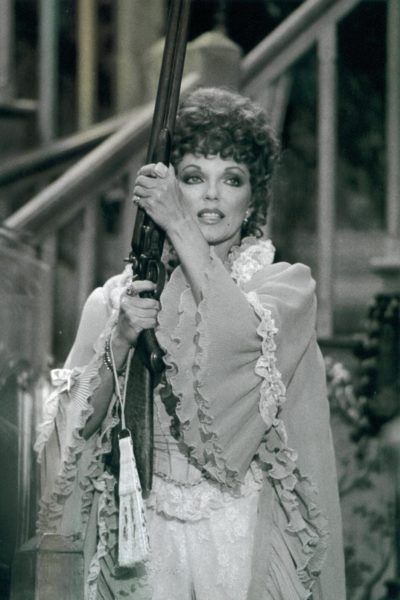 This sprightly TV movie from 1982 boasts a rather decent cast and, at least in the first half, manages to go in unexpected and interesting direction. It does end up descending into rather familiar territory thereafter, and the finale doesn’t manage to be as rousing as it should be. Yet it managed to keep my interest, and as this genre goes, that probably makes it better than average. It takes place in the last stages of the American Civil War, when the Southern women of Sweetwater have been left bereft of men, after the Confederate Army has recruited them all to their cause. Newly arrived in town is doctor Maggie McCulloch (Barnes), who has arrived to help her ailing aunt, Annie (Collins). She is shocked to discover Annie is less the mine owner touted in her letters, and more the owner of the town brothel.
This sprightly TV movie from 1982 boasts a rather decent cast and, at least in the first half, manages to go in unexpected and interesting direction. It does end up descending into rather familiar territory thereafter, and the finale doesn’t manage to be as rousing as it should be. Yet it managed to keep my interest, and as this genre goes, that probably makes it better than average. It takes place in the last stages of the American Civil War, when the Southern women of Sweetwater have been left bereft of men, after the Confederate Army has recruited them all to their cause. Newly arrived in town is doctor Maggie McCulloch (Barnes), who has arrived to help her ailing aunt, Annie (Collins). She is shocked to discover Annie is less the mine owner touted in her letters, and more the owner of the town brothel.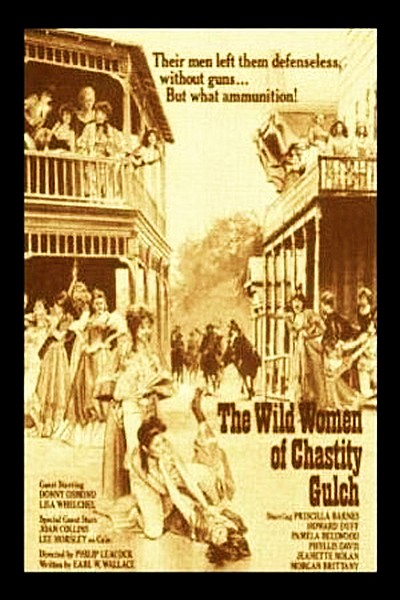 That aside, the plot unfolds largely as you’d expect. There’s the initial tension between whores and housewives, and the women struggle to come to terms with the everyday business of running the town. For example, there’s a fire drill, which ends up with half the ladies thrashing around in shallow water, and some other slapstick involving whitewash, that is somewhere between lightly amusing and embarrassing. However, Barnes – at the time a sitcom star in Three’s Company – does a very good job of keeping the film grounded, and the supporting cast help admirably in that aspect. Collins is particularly good, projecting an attitude which clearly proclaims she will take no shit from anyone.
That aside, the plot unfolds largely as you’d expect. There’s the initial tension between whores and housewives, and the women struggle to come to terms with the everyday business of running the town. For example, there’s a fire drill, which ends up with half the ladies thrashing around in shallow water, and some other slapstick involving whitewash, that is somewhere between lightly amusing and embarrassing. However, Barnes – at the time a sitcom star in Three’s Company – does a very good job of keeping the film grounded, and the supporting cast help admirably in that aspect. Collins is particularly good, projecting an attitude which clearly proclaims she will take no shit from anyone.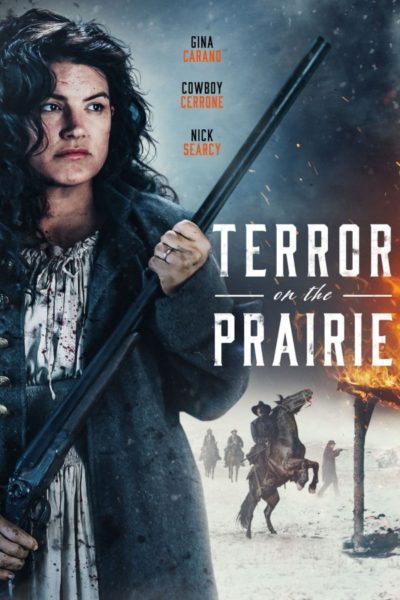 I keep hoping Carano will deliver an action film reaching the quality of her debut,
I keep hoping Carano will deliver an action film reaching the quality of her debut,  30 years old, Willa sees herself as an “old maid.” She’s the eldest of three half-sisters, daughters of peripatetic ne’er-do-well Finn Malone, who outlived two wives (and was deserted by a third) in the course of his wanderings, which in 1889 led him to a homestead in the small community of Sweet Clover. Like many of the townsfolk, he was heavily in debt to conniving banker Theodore Pierce, and used his land as collateral. But he’s now recently dead, murdered after he took off on his latest quest for gold. At the moment, the farm isn’t productive; without him, the sisters won’t be able to repay the loan, and they’ll lose their home within months.
His killer, though, has been identified as notorious outlaw Charlie Bangs, rumored to be hiding out in Indian Territory, and there’s a $1,000.00 price on his head. When Willa, early on, conceives the idea of tracking him down and claiming the bounty, nobody can talk her out of it. The idea’s not as hare-brained as some folks think. Tough and practical, “tomboy” Willa’s a good shot with a rifle whose hunting skills keep her family supplied with meat; she can ride, and she’s got guts. As even she recognizes, though, the enterprise she’s contemplating is a deadly dangerous one. At the very least, she’ll need the services of an experienced trail guide. Enter one Gideon Hartley.
Gideon’s about 35; he’s fairly new in town, but the reputation that precedes him confirms that he’s highly competent as a trail guide in rough terrain –when he’s sober. But his reputation also suggests (correctly) that he drinks a lot. In fact, his alcohol abuse problem is longstanding and deep-seated. He and Willa meet in Chapter 1. Surprisingly (or maybe not, depending on how familiar readers are with “romance” genre conventions; this was published under the “Love Inspired” imprint, though I approached it as a Western, and it works on those terms) there’s some chemistry between them; but neither is looking for that sort of thing, nor inclined to nurture it. More to the point, Willa’s not thrilled with the idea of a “drunk” for a guide; and Gideon (who hasn’t done any guiding for about a year) is pretty well convinced that he’s not up to the job and that Willa would be embarking on a suicide mission anyway. But before long, it becomes clear to her that he’s the only prospective guide she’s going to get, and to him that she’s going whether he goes with her or not.
Goodnight gives serious attention to developing her characters (including the secondary ones, along with our H/h) and bringing the community to life, and she takes the time needed to do that in depth. We don’t get started on our actual quest until a bit more than 200 pages in (and the book has 363 pages). Some readers, who expect the adventure of the trail to be the main warp and woof of the tale, won’t like this aspect. However, I fully appreciated the textured, in-depth approach. Both main characters (who alternate as viewpoint characters, though third-person narration is used throughout) are fully round and three-dimensional. Gideon in particular has a lot of psychological baggage, which is believable, and gradually disclosed.
Western-style action, once it kicks in, isn’t stinted; there are plenty of jeopardies on the trail, and the climactic confrontation will test our leading couple’s mettle on more than one level. (Willa doesn’t actually have to fire her rifle, but she displays her action heroine moxie by handling a very physically challenging situation near the end with flying colors; I doubt if I’d been brave enough to do the things she did!) The author writes very well; her plotting is excellent, and her re-creation of the time and place masterful. (It features a cameo appearance by real-life person Bass Reeves, the first African-American deputy U.S. marshall.)
In keeping with the standards of the ECPA, this book poses no content issues for bad language, sexual content (we do have reference to prostitution, and to the ugly trade of sex trafficking, which is a very contemporary reality, but which goes back a lot longer than that), or ultra-gory violence. Christian faith (which both main characters were raised with, though Gideon’s faith has been long neglected) plays a positive role here, though the book isn’t “preachy” and delivers its spiritual messages by example.
I’d recommend this to fans of Westerns, Western romance, and clean (especially Christian) romance in general, as well as to fans of strong heroines. The story arc here is complete, and the book isn’t said to be part of a series (though I suspect that both of Willa’s sisters might eventually get her own sequel). Although some characters, such as Belle Holbrook, obviously have very intriguing backstories, I couldn’t find any indication that they were in prior books by the author. (But if they were, or if they eventually get prequels, I’d be interested in reading those books!)
Author: Linda Goodnight
Publisher: Love Inspired; available
30 years old, Willa sees herself as an “old maid.” She’s the eldest of three half-sisters, daughters of peripatetic ne’er-do-well Finn Malone, who outlived two wives (and was deserted by a third) in the course of his wanderings, which in 1889 led him to a homestead in the small community of Sweet Clover. Like many of the townsfolk, he was heavily in debt to conniving banker Theodore Pierce, and used his land as collateral. But he’s now recently dead, murdered after he took off on his latest quest for gold. At the moment, the farm isn’t productive; without him, the sisters won’t be able to repay the loan, and they’ll lose their home within months.
His killer, though, has been identified as notorious outlaw Charlie Bangs, rumored to be hiding out in Indian Territory, and there’s a $1,000.00 price on his head. When Willa, early on, conceives the idea of tracking him down and claiming the bounty, nobody can talk her out of it. The idea’s not as hare-brained as some folks think. Tough and practical, “tomboy” Willa’s a good shot with a rifle whose hunting skills keep her family supplied with meat; she can ride, and she’s got guts. As even she recognizes, though, the enterprise she’s contemplating is a deadly dangerous one. At the very least, she’ll need the services of an experienced trail guide. Enter one Gideon Hartley.
Gideon’s about 35; he’s fairly new in town, but the reputation that precedes him confirms that he’s highly competent as a trail guide in rough terrain –when he’s sober. But his reputation also suggests (correctly) that he drinks a lot. In fact, his alcohol abuse problem is longstanding and deep-seated. He and Willa meet in Chapter 1. Surprisingly (or maybe not, depending on how familiar readers are with “romance” genre conventions; this was published under the “Love Inspired” imprint, though I approached it as a Western, and it works on those terms) there’s some chemistry between them; but neither is looking for that sort of thing, nor inclined to nurture it. More to the point, Willa’s not thrilled with the idea of a “drunk” for a guide; and Gideon (who hasn’t done any guiding for about a year) is pretty well convinced that he’s not up to the job and that Willa would be embarking on a suicide mission anyway. But before long, it becomes clear to her that he’s the only prospective guide she’s going to get, and to him that she’s going whether he goes with her or not.
Goodnight gives serious attention to developing her characters (including the secondary ones, along with our H/h) and bringing the community to life, and she takes the time needed to do that in depth. We don’t get started on our actual quest until a bit more than 200 pages in (and the book has 363 pages). Some readers, who expect the adventure of the trail to be the main warp and woof of the tale, won’t like this aspect. However, I fully appreciated the textured, in-depth approach. Both main characters (who alternate as viewpoint characters, though third-person narration is used throughout) are fully round and three-dimensional. Gideon in particular has a lot of psychological baggage, which is believable, and gradually disclosed.
Western-style action, once it kicks in, isn’t stinted; there are plenty of jeopardies on the trail, and the climactic confrontation will test our leading couple’s mettle on more than one level. (Willa doesn’t actually have to fire her rifle, but she displays her action heroine moxie by handling a very physically challenging situation near the end with flying colors; I doubt if I’d been brave enough to do the things she did!) The author writes very well; her plotting is excellent, and her re-creation of the time and place masterful. (It features a cameo appearance by real-life person Bass Reeves, the first African-American deputy U.S. marshall.)
In keeping with the standards of the ECPA, this book poses no content issues for bad language, sexual content (we do have reference to prostitution, and to the ugly trade of sex trafficking, which is a very contemporary reality, but which goes back a lot longer than that), or ultra-gory violence. Christian faith (which both main characters were raised with, though Gideon’s faith has been long neglected) plays a positive role here, though the book isn’t “preachy” and delivers its spiritual messages by example.
I’d recommend this to fans of Westerns, Western romance, and clean (especially Christian) romance in general, as well as to fans of strong heroines. The story arc here is complete, and the book isn’t said to be part of a series (though I suspect that both of Willa’s sisters might eventually get her own sequel). Although some characters, such as Belle Holbrook, obviously have very intriguing backstories, I couldn’t find any indication that they were in prior books by the author. (But if they were, or if they eventually get prequels, I’d be interested in reading those books!)
Author: Linda Goodnight
Publisher: Love Inspired; available 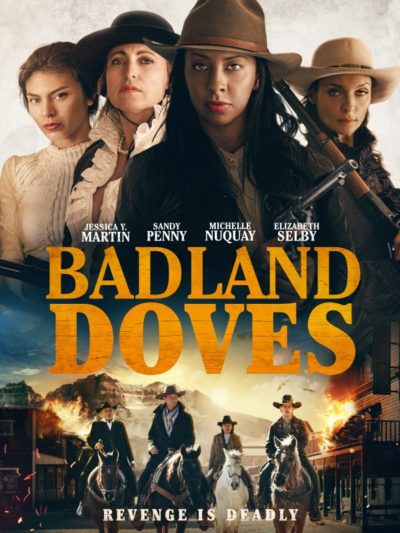 I am contractually obliged to appreciate at least somewhat, any film made here in Arizona. This certainly fits the bill, having been shot at places like the Pioneer Living History Museum, Sitgreaves National Forest and Winters Film Group Studio. However, it is a fairly basic tale of two-pronged revenge, with significant pacing issues. The proceedings only come to life in the last 20 minutes – and barely that. Initially, matters are more than a tad confusing, as we jump about in time and space without apparent notification. But the basic principal is eventually established.
I am contractually obliged to appreciate at least somewhat, any film made here in Arizona. This certainly fits the bill, having been shot at places like the Pioneer Living History Museum, Sitgreaves National Forest and Winters Film Group Studio. However, it is a fairly basic tale of two-pronged revenge, with significant pacing issues. The proceedings only come to life in the last 20 minutes – and barely that. Initially, matters are more than a tad confusing, as we jump about in time and space without apparent notification. But the basic principal is eventually established. There are a couple of points to note going in. This was one of “12 Westerns in 12 months”, a project run by the director during 2020. It also proudly pronounces itself as the first ever Western feature to be shot entirely on an iPhone. Both of these do lead to limitations. The sheer speed involved obvious has an impact, and I can’t help wondering if a more measured approach would have been better for the end product. As for the iPhone… Well, on the plus side it looked perfectly watchable on my 49″ television, especially the outdoor scenes. However, the indoor sequences seemed almost
There are a couple of points to note going in. This was one of “12 Westerns in 12 months”, a project run by the director during 2020. It also proudly pronounces itself as the first ever Western feature to be shot entirely on an iPhone. Both of these do lead to limitations. The sheer speed involved obvious has an impact, and I can’t help wondering if a more measured approach would have been better for the end product. As for the iPhone… Well, on the plus side it looked perfectly watchable on my 49″ television, especially the outdoor scenes. However, the indoor sequences seemed almost 
 Like “Franklin W. Dixon” and “Carolyn Keene,” “A. W. Hart” is the house pen name assigned by the publisher to all the various authors of individual books in the series of which this novel is the seventh installment. In this case, though, A. W. is actually my Goodreads friend Charles Gramlich (that’s no secret; he’s credited in the “About the Author” note at the book’s end). Although I’d read and liked a couple of his short e-stories previously, I’d never tried any of his long fiction. So, when I saw this novel mentioned in one of his blog posts last year, I was intrigued enough to buy a copy. (Barb and I read it together, since she’s an avid Western fan, and I knew this would be right up her alley.)
Like “Franklin W. Dixon” and “Carolyn Keene,” “A. W. Hart” is the house pen name assigned by the publisher to all the various authors of individual books in the series of which this novel is the seventh installment. In this case, though, A. W. is actually my Goodreads friend Charles Gramlich (that’s no secret; he’s credited in the “About the Author” note at the book’s end). Although I’d read and liked a couple of his short e-stories previously, I’d never tried any of his long fiction. So, when I saw this novel mentioned in one of his blog posts last year, I was intrigued enough to buy a copy. (Barb and I read it together, since she’s an avid Western fan, and I knew this would be right up her alley.)